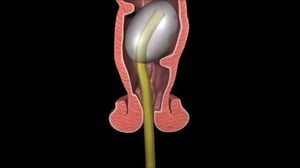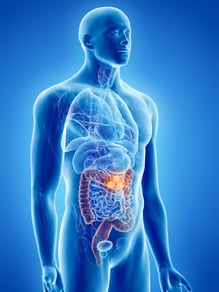Urodynamics testing requires very well-trained staff in order to determine the basis and progression of urologic diseases. Typically, UDS training is provided by the equipment manufacturers, but there are other viable training options in the market.

Urodynamics testing requires very well-trained staff in order to determine the basis and progression of urologic diseases. Typically, UDS training is provided by the equipment manufacturers, but there are other viable training options in the market.
Topics: urodynamics training
Topics: Urology Practice Trends
In the following article we focus on this study and discuss the effects of the uroselective α1-blocker tamsulosin on urodynamic parameters in male patients with type I primary bladder neck obstruction. Moving forward, an obstruction with high voiding pressure accompanied by poor flow and narrowing at the neck of the bladder with concomitant silent external sphincter on electromyography forms the basis for primary bladder neck obstruction. Alpha blockers, which are used in the treatment of primary bladder neck obstructions do not have evidence for objective urodynamic efficacy.
Let’s delve into the topic. Available treatment options for bladder neck obstruction are observation of the patient with follow-up, clean intermittent catheterization or bladder neck incision, alpha blockers. Studies conducted to assess the efficacy of the pharmacological approach are nonrandomized and small.
Topics: male urodynamics, Male Diagnostics
Topics: Urology Practice Trends
The storage and elimination of urine are regulated by neural circuits in the brain and spinal cord to coordinate function between the urethra and the urinary bladder. During micturition, the elimination of urine is facilitated by bladder wall contraction as well as urethral wall and pelvic floor muscle relaxation. In the following article, we will discuss discuss this study: Randomized Controlled Trial to Assess the Impact of Intraurethral Lidocaine on Urodynamic Voiding Parameters.
Lower urinary tract symptoms (LUTS) lead to incomplete bladder emptying, decreased quality of life, increased healthcare use, decreased workplace productivity and impact in intimate relationships. Some of the approaches to improve the condition such as
Topics: urodynamics, intraurethral, lidocaine
 Fecal incontinence (FI) is a common clinical condition with a negative impact on the quality of life. Commonly performed tests to evaluate fecal incontinence include anorectal manometry (ARM) and endoanal ultrasonography (EAU). In the following article, we will discuss this study, which aims to compare the results of these two tests in a cohort of patients with FI.
Fecal incontinence (FI) is a common clinical condition with a negative impact on the quality of life. Commonly performed tests to evaluate fecal incontinence include anorectal manometry (ARM) and endoanal ultrasonography (EAU). In the following article, we will discuss this study, which aims to compare the results of these two tests in a cohort of patients with FI.
Fecal incontinence is defined as the involuntary passage of stool in a person older than 4 years and for a period of 3 months or more. The prevalence is suspected to be more than 15%, with higher incidence in the geriatric age population.
FI: Main Causes
Topics: Anorectal Manometry Testing, Colonoscopy
Introduction:
Urodynamics (UDS) is an interactive diagnostic study of lower urinary tract function. It is composed of several tests that can be used to obtain functional information about urine storage and expulsion. Its main goal is to reproduce the patients’ symptoms and determine their cause.
The present article is a review of the physiological concepts behind UDS, and explains the various normal and abnormal forces and parameters that are measured and used during the tests to assist the physician in making a diagnosis. It outlines the importance and methods of the calibration of UDS equipment to optimize diagnostic accuracy and reliability, which would have a crucial impact over the treatment’s decision, and consequently the patient’s outcome.
Topics: urodynamics
 Anorectal function tests are usually performed in patients with fecal incontinence who have failed typical, conservative treatment. This study, which we are going to discuss right now, was aimed to determine the additive value of performing anorectal function tests in such patients in selecting them for surgery.
Anorectal function tests are usually performed in patients with fecal incontinence who have failed typical, conservative treatment. This study, which we are going to discuss right now, was aimed to determine the additive value of performing anorectal function tests in such patients in selecting them for surgery.
Introduction
Fecal incontinence is the inability to voluntarily control bowel movements causing stool to leak from the rectum, unexpectedly. It is a very disabling condition with a prevalence of roughly 6% in the adult population. Causes of FI are:
The terms interstitial cystitis and bladder pain syndrome are used side by side. IC/BPS is often used like this in the medical world, boasting symptoms such as urinary frequency, urgency and bladder pain, pressure and/or discomfort in the absence of other pathological findings. Current management aims to decrease symptoms such as bladder pain and lower urinary tract (LUT) symptoms.
Topics: interstitial cystitis, SNM, BoNT-A, Botulinum Toxin A, sacral neuromodulation, bladder pain syndrome, botox
In the following article we are going to summarize this study. The aim of this research paper is to present facts and data to state that simultaneous pressure measurements with WP and AC in a single catheter will provide analogous pressures for Valsalvas, coughs, and maximum pressures in voiding pressure studies (VPS).
Topics: urodynamics catheters
We hope our blog is helpful. Please leave us your thoughts and feel free to share any posts of interest to you on your social media accounts using the social media links at the top.
flexible and comprehensive urodynamics and anorectal manometry solutions delivered on-site.
1739 University Ave., #338, Oxford, MS 38655
888-508-3330
805-392-8111
Copyright ©2022 Brighter Health Network, LLC all rights reserved | Privacy Policy
Brighter Health Network